POLECAMY
Porphyreon
Hellenistic and Roman pottery production in the Sidon hinterland
Autor:
Redakcja:
Wydawca:
Format:
ibuk
Warsztat ceramiczny w starożytnym mieście Porphyreon na wybrzeżu fenickim (współcześnie Jiyeh w Libanie) był badany podczas prac ratunkowych w 2004 roku przez misję CAŚ UW pracującą na stanowiskach Jiyeh i Chhîm. Warsztat ten działał na skalę lokalną, produkując przede wszystkim amfory i naczynia kuchenne. Stanowił on ważny element lokalnej gospodarki od połowy II wieku p.n.e. do VII wieku n.e. Zebrany tam materiał ceramiczny – naczynia i odrzuty produkcyjne – posłużył do przeprowadzenia studiów nad repertuarem form wyrabianych tam naczyń oraz do analiz masy glinianej używanej w tym celu. Te badania pozwoliły poznać drugi na wybrzeżu libańskim, po Berytusie, ośrodek produkcji naczyń ceramicznych działający w okresach hellenistycznym i rzymskim.
Monografia prezentująca lokalną produkcję, przedstawia typologiczną i chronologiczną klasyfikację naczyń, a następnie omawia ją w kontekście trendów i zjawisk typowych dla fenickiej produkcji ceramicznej w omawianych okresach. Ogląd produkcji lokalnych warsztatów pozwala wysnuwać nowe wnioski na temat historii starożytnego handlu i rzemiosła w środkowej Fenicji.
******
The pottery workshop in the town of Porphyreon on the Phoenician coast (modern Jiyeh in Lebanon), a site midway between Beirut and Sidon (modern Saida), operated on a local scale, producing mainly amphorae and kitchen vessels. It was an important cog in the wheels of the region’s economy from the middle of the 2nd century BC to the 7th century AD. A Polish–Lebanese rescue project in 2004 probed a Hellenistic and Roman pottery production zone in the town. The assemblage of ceramic vessels and wasters that was recorded supported an extensive study of the local repertory of vessels produced, as well as the clay of which the were made. Porphyreon, thus, became the second, after Berytus, Hellenistic and Roman pottery production site to be excavated on the Lebanese coast, whereas laboratory analyses of the chemical composition of the clay have supplied a key criterion for distinguishing locally made vessels from other ceramic production in Phoenicia.
The study presents the ceramic assemblage from Jiyeh, including a typological and chronological classification of the vessels, and discusses the finds in relation to trends and phenomena typical of Phoenician pottery production in the periods in question. The overall picture of local workshop output contributes important insights into the history of ancient trade and craftsmanship in central Phoenicia. A formal examination of the ceramic material, combined with a review of ancient sources, written and other, sheds light on the administrative status of the settlement in the Hellenistic and Roman periods, placing it convincingly in the hinterland of Sidon rather than Berytus. Moreover, it has added a unique small-town perspective to the study of the economy of ancient Phoenicia, based so far chiefly on data from the large urban centres like Sidon, Tyre and Berytus.
| Rok wydania | 2021 |
|---|---|
| Liczba stron | 234 |
| Kategoria | Publikacje darmowe |
| Wydawca | Uniwersytet Warszawski |
| Tłumaczenie | Miłosława Stępień, Iwona Zych |
| ISBN-13 | 978-83-235-4734-1 |
| Numer wydania | 1 |
| Informacja o sprzedawcy | ePWN sp. z o.o. |
Ciekawe propozycje
Spis treści
| Acknowledgements | 9 |
| Foreword | 10 |
| Preface | 11 |
| Chapter 1. Historical and archaeological evidence 13 | |
| 1.1. Geographical context | 13 |
| 1.2. Historical evidence | 15 |
| 1.3. Administrative affiliations based on written sources | 22 |
| 1.4. Archaeological evidence | 22 |
| 1.4.1. Site topography | 22 |
| 1.4.2. History of research | 23 |
| Chapter 2. Context, stratigraphy and classification criteria 27 | |
| 2.1. Context and stratigraphy of the pottery finds | 27 |
| . 2.1.1. Late Hellenistic period | 27 |
| 2.1.2 Early Roman period | 30 |
| 2.2. Typological and chronological classification | 31 |
| 2.3. Presentation of the ceramic material | 35 |
| 2.3.1. Description and typology | 35 |
| 2.3.2. Select parallels and dating | 35 |
| 2.3.3. Illustrations and catalogue | 36 |
| 2.3.4. Jiyeh site sector D assemblage | 37 |
| Chapter 3. Late Hellenistic pottery production 41 | |
| 3.1. General description | 41 |
| 3.2. Late Hellenistic Jiyeh Ware: macroscopic description | 42 |
| 3.3. Typology of forms | 43 |
| 3.3.1. Amphorae | 43 |
| 3.3.1.1. “Phoenician” style amphorae | 43 |
| 3.3.1.2. “Greek” style amphorae | 44 |
| 3.3.2. Kitchen vessels | 47 |
| 3.3.2.1. Closed vessels for storing and serving liquids | 47 |
| 3.3.2.1.1. Table amphorae | 47 |
| 3.3.2.1.2. Jugs | 48 |
| 3.3.2.1.3. Juglets | 50 |
| 3.3.2.1.4. Trefoil juglets | 51 |
| 3.3.2.1.5. Lagynos-like juglets | 51 |
| 3.3.2.1.6. Flat flasks/bottles | 52 |
| 3.3.2.2. Cooking vessels and utensils | 52 |
| 3.3.2.2.1. Cooking pots | 53 |
| 3.3.2.2.2. Casseroles | 54 |
| 3.3.2.2.3. Stands | 57 |
| 3.3.2.2.4. Braziers | 58 |
| 3.3.2.2.5. Lids | 59 |
| 3.3.2.3. Other kitchen vessels | 61 |
| 3.3.2.3.1. Bowls | 61 |
| 3.3.2.3.2. Lekanai | 64 |
| 3.3.2.3.3. Kraters | 65 |
| 3.3.2.3.4. Jars | 66 |
| 3.3.2.3.5. Funnels | 71 |
| 3.4. Summary | 71 |
| Chapter 4. Early Roman pottery production 75 | |
| 4.1. General description | 75 |
| 4.2. Early Roman Jiyeh Ware: macroscopic description | 76 |
| 4.3. Typology | 77 |
| 4.3.1. Amphorae | 77 |
| 4.3.2. Kitchen vessels | 80 |
| 4.3.2.1. Closed vessels for storing and serving liquids | 81 |
| 4.3.2.1.1. Table amphorae | 81 |
| 4.3.2.1.2. Jugs | 83 |
| 4.3.2.1.3. Juglets | 83 |
| 4.3.2.1.4. Trefoil juglets | 84 |
| 4.3.2.1.5. Lagynos | 85 |
| 4.3.2.1.6. Lagynos-like juglets | 86 |
| 4.3.2.2. Cooking vessels and utensils | 86 |
| 4.3.2.2.1. Cooking pots | 87 |
| 4.3.2.2.2. Casseroles | 90 |
| 4.3.2.2.3. Pans | 91 |
| 4.3.2.2.4. Bollitore | 92 |
| 4.3.2.2.5. Stands | 92 |
| 4.3.2.3. Other kitchen vessels | 94 |
| 4.3.2.3.1. Bowls | 94 |
| 4.3.2.3.2. Lekane | 95 |
| 4.3.2.3.3. Kraters | 96 |
| 4.3.2.3.4. Pot with merlons | 97 |
| 4.4. Summary | 97 |
| Chapter 5. Porphyreon̕s place in the Phoenician hinterland: interpretation of the evidence 101 | |
| 5.1. Administrative relation to Sidon and Berytus: the ceramic evidence | 101 |
| 5.2. Regional connections with southern Phoenicia: the ceramic evidence | 110 |
| 5.3. Distribution of vessels produced in Porphyreon | 111 |
| 5.4. Organisation of ceramic production in Hellenistic and Roman Phoenicia | 112 |
| Chapter 6. Conclusions 117 | |
| Catalogue | 119 |
| Late Hellenistic, Plates 1–42 | 121 |
| Early Roman, Plates 43–79 | 207 |
| Parallels from Jiyeh site sector D, Plates 80–92 | 283 |
| Porphyreon pottery, Colour plates 93–97 | 299 |
| References | 307 |
| List of figures and tables | 319 |

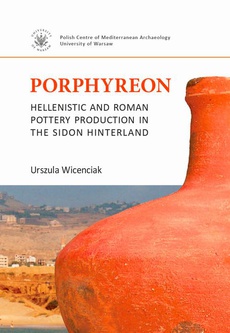









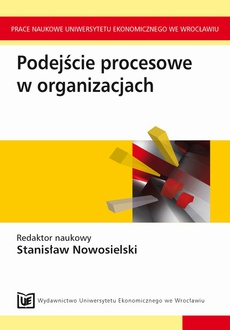





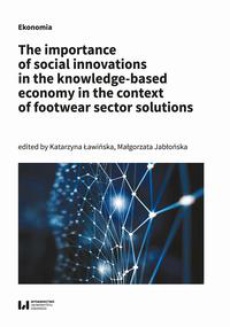


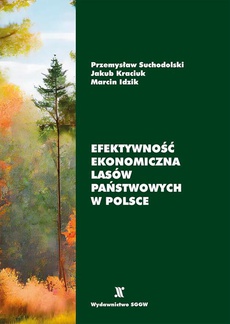

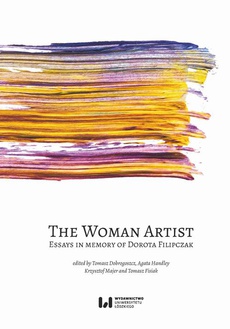
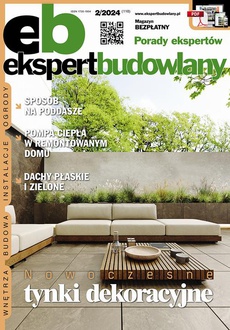
![Informatyka w biznesie 2023 [DEBIUTY STUDENCKIE]](https://o.ibuk.pl/okladki/230/3/309411.jpg)
